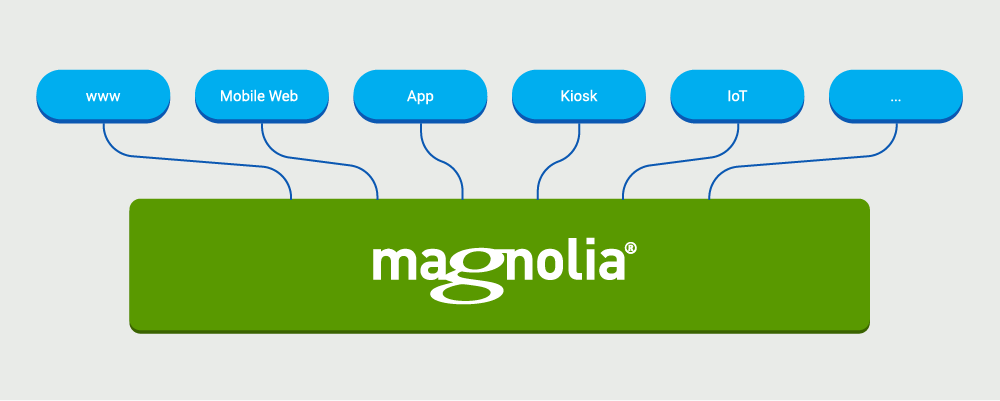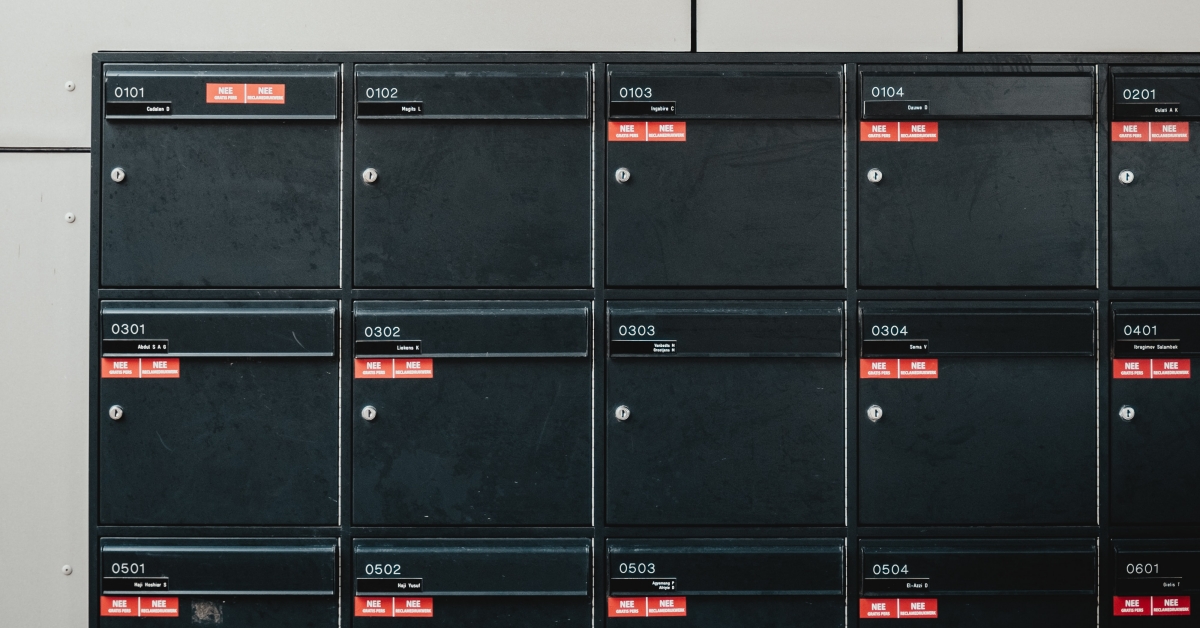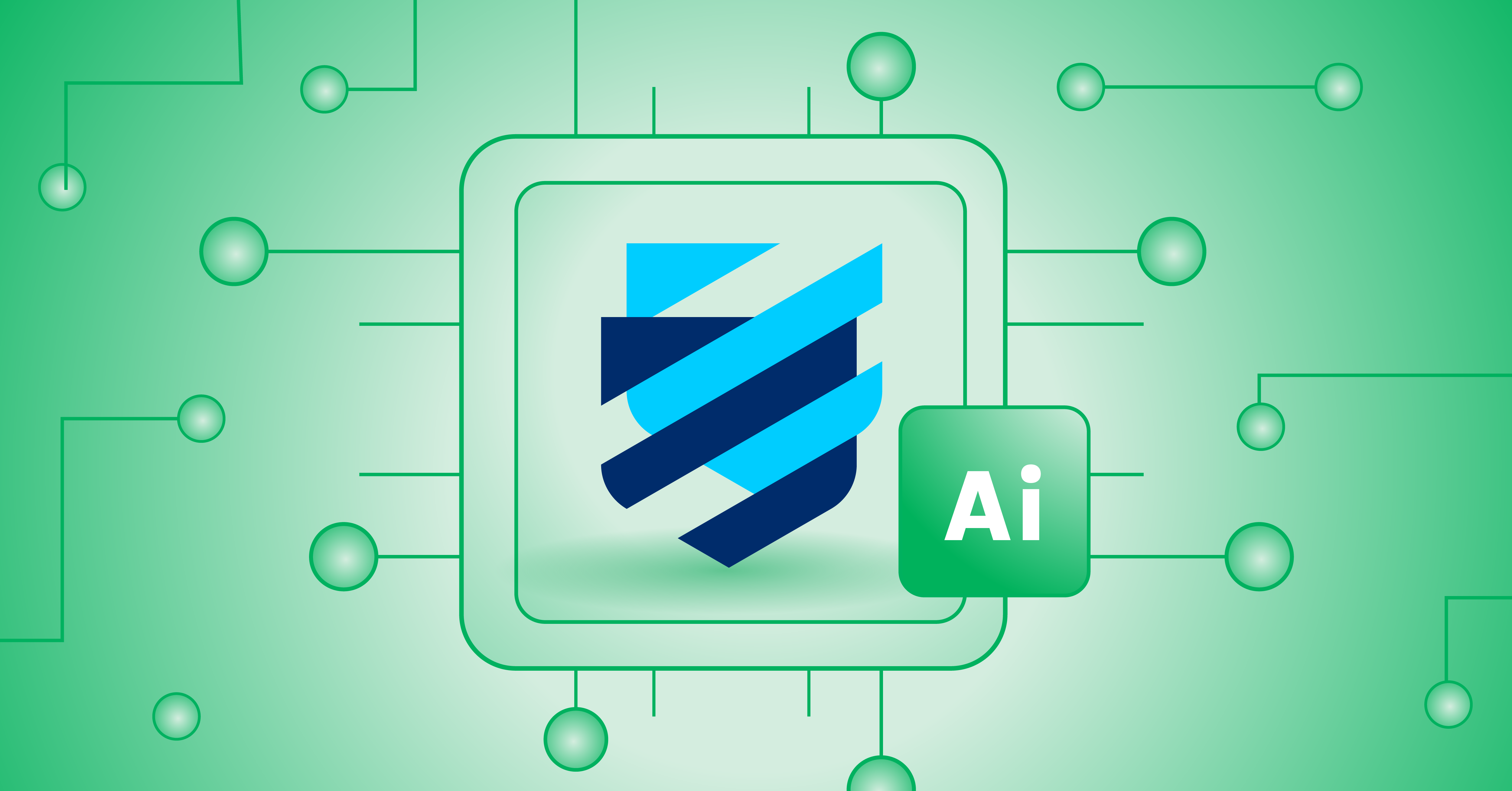- Feb 8, 2022
- 6 min
What is Content as a Service (CaaS)? Explanation and advantages
Magnolia in action
Take 12 minutes and a coffee break to discover how Magnolia can elevate your digital experience.
Content whenever, wherever and in whatever form you need it - that is the promise of content as a service (CaaS).
Without this content management model, modern content marketing and omnichannel marketing would not be possible at all. Why not? What are the advantages of CaaS? And what does the required IT architecture look like?
You will find the answers to all these questions in this article.
Definition: What is Content as a Service (CaaS)?
Content as a service is an approach to content management that makes it possible to supply an unlimited number of digital channels (front ends) with content: such as the website, mobile apps, online stores, point-of-sale systems (POS) or "smart" devices.
The content is managed in a structured manner in one place, namely the Content Hub. The front ends and other solutions can access and display the individual pieces of content via interfaces.
The hub is the central distribution station for content, so to speak, and makes the "content as a service" available to all channels. This model is in contrast to traditional content management solutions, where the content for individual channels is maintained separately in individual CMS solutions.
Only with the content as a service approach can you efficiently manage content for many channels and operate omnichannel marketing.
Why is CaaS necessary for digitally driven business models?
Online users don't just consume content on one channel: they jump back and forth between desktop and smartphone, are on social media or shopping portals. Companies need to recognize this need and offer content on all of these channels.
In addition, the Internet of Things (IoT) is giving rise to more and more use cases in which "smart" machines or software themselves need to be supplied with content and data.
With traditional CM approaches - separately managed content per channel - this would end in chaos: Content management would be extremely slow and expensive. Each additional channel would increase the effort (over)proportionally.
Omnichannel marketing and IoT business models would simply not be profitable. How exactly does CaaS remedy this?
What are the advantages of CaaS?
How exactly does Content as a Service help companies: both business - marketing and sales - and IT?
For marketing and sales
Multichannel publishing
CasS means that all content is managed in a structured and format-neutral way. The content can therefore be used for all channels: not just web and mobile, but also for POS, print, voice assistants and so on.
External partners can also access the content in order to use it as part of white label solutions, for example.
Omnichannel marketing
The content is managed in the central content hub and played out to all channels from there. This allows you to supply a practically unlimited number of channels with content. Nevertheless, the effort remains manageable; you can ensure the brand conformity and quality of the content.
Your customers receive the same high-quality digital experiences across all channels and can switch between channels without any noticeable break.
Digital experiences adapted to different channels
Despite the uniform appearance, you can adapt the usability and content for the respective channel. You do not need to take the limitations of the CMS into account and can optimize each channel individually.
Personalized content
Personalization quickly results in hundreds and thousands of content variants. Managing these manually is almost impossible. In a CaaS architecture, you don't need to.
You can automate this process using predefined rules and AI support: You define the personalized customer experiences and the front ends pull the necessary content and data themselves.
Shorter time-to-market, lower costs
You can adapt and reuse existing content instead of creating it again and again for different channels or campaigns. You also don't have to copy it between different systems and maintain it twice.
This saves you a lot of time and money and allows you to launch new campaigns much faster - a prerequisite for agile content management.
New business models
CaaS not only enables omnichannel marketing, but also completely new business models based on additional channels, such as those already mentioned: IoT, voice assistants, white label models and more. You don't have to set up a new infrastructure for this, but instead dock onto the existing one.
For IT
With a Content as a Service model, IT does not have to maintain a monolithic, "organically grown" and confusing system. Instead, CaaS is based on a lean infrastructure consisting of individual, independent components.
This makes further development and bug fixing much easier. In addition, front-end developers are free to choose the technologies they want and are not restricted by a CMS manufacturer.
Last but not least, marketers and content authors hardly need any IT support when working in a CaaS environment, which means that developers can concentrate on their core tasks.
What does a CaaS infrastructure look like?
The CaaS model requires a certain CMS infrastructure. The best way to explain this is to compare it with a classic CMS.
The backend of a classic CMS essentially has one function: to manage and deliver the content for the associated frontend - let's assume for the website. The entire functionality is tailored to the front end and the content is formatted so that it looks good on the website.
Now imagine you want to operate other front ends: such as an app, an online store or a voice assistant. To do this, you would have to transfer the content to the respective systems and format it.
This would either only work with a great deal of effort and various workarounds, or not at all and you would have to copy the content and manage it twice.
A headless CMS is used in a Content as a Service infrastructure: although the content is stored in a structured manner, it is not formatted. The headless CMS does not have its own front end (no "head") to display the content.
Instead, the CMS has APIs, i.e. standard interfaces, via which the separately operated frontends can retrieve the content: Text, images, buttons, videos and so on.
Different templates or layouts are defined for the frontends, into which the content elements are integrated. Although all frontends use the same content, it can look completely different in the various channels. The content is only formatted in the frontend.

The great thing about this is that the architecture always remains the same, regardless of the number of front ends. If you connect additional channels, this does not increase the complexity - or only slightly.
Of course, the amount of content, content variants and digital assets is increasing. But modern headless CMSs come with functions such as AI-based search, automatic versioning and tagging: this keeps the flood of content manageable and allows you to provide content as a service for all current and future channels.
Which CMS is right for you? Our CMS selection checklist will help you decide.










